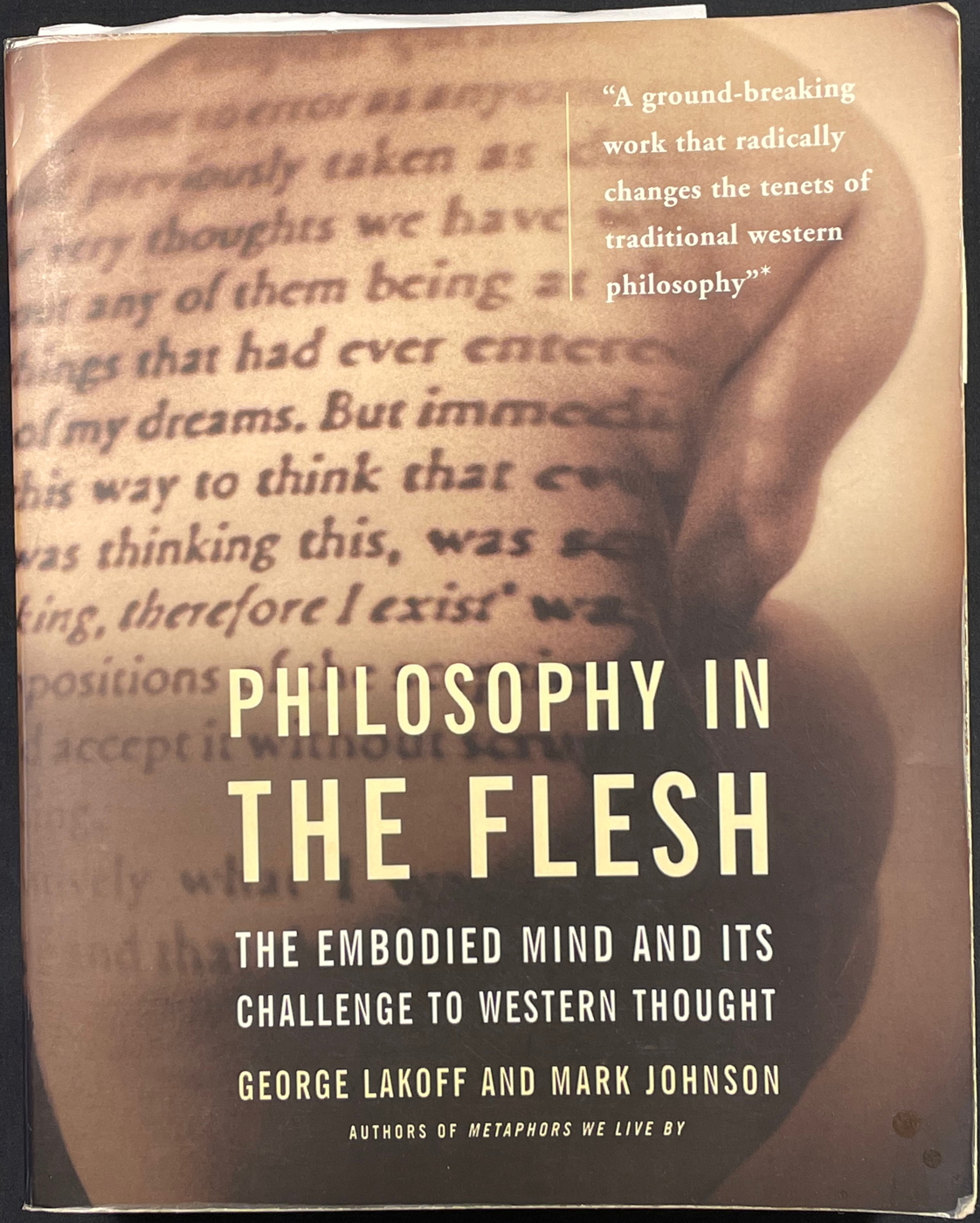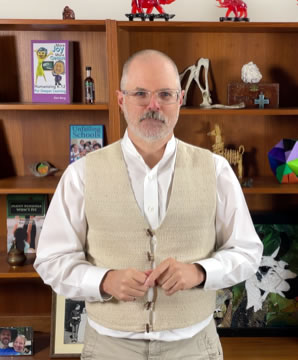Replacing The Correspondence Theory of Truth
The correspondence theory of truth is a long-standing philosophical staple.
The premise is simple: if any statement you might make about the world corresponds to the way the world is, then it must be true.
Unfortunately, the findings of a variety of sciences and cognitive linguistics, in particular, undermine the validity of that simple statement.
This is a major wrench thrown into the Western philosophical assumptions that drive our society, especially in politics.
The following excerpts are from the book Philosophy in the Flesh: The Embodied Mind and Its Challenge to Western Thought (1999) by George Lakoff & Mark Johnson.
George Lakoff is a professor of linguistics at the University of California at Berkeley while Mark Johnson is a chair of philosophy at the University of Oregon.
The excerpts are from the chapter entitled Realism and Truth and are offered here to inspire discussion.
At the end I offer a few comments including some about how this new view of truth can be abused in politics, has given physicists difficulty, and should be respected in education.

Characterizing the Correspondence Theory of Truth in Philosophy in the Flesh
[p. 102]
What we understand the world to be like is determined by many things: our sensory organs, our ability to move and to manipulate objects, the detailed structure of our brain, our culture, and our interactions in our environment, at the very least.
What we take to be true in a situation depends on our embodied understanding of the situation, which is in turn shaped by all these factors.
Truth for us, any truth that we can have access to, depends on such embodied understanding.
The classical correspondence theory of truth is disembodied.
The sensorimotor system plays no role in it.
Bodily functioning in the world plays no role in it.
The brain plays no role in it.
There is no body at all in the correspondence theory of truth.
But truth is not simply a relation between words and the world, as if there were no being with a brain and a body interposed.
Indeed, the very idea that beings embodied in all these concept-shaping ways could arrive at a disembodied truth based on disembodied concepts is not merely arrogant, but utterly unrealistic. …
The Problem With the Correspondence Theory of Truth
[excerpt continues, p. 104-106]
Here is the problem [with the] classical correspondence theory of truth: truth claims at one level [of embodied cognition] may be inconsistent with those at another.
[There are at least three levels of embodied concepts; neural embodiment, phenomenological conscious experience, and the cognitive unconscious.]
Color provides an obvious example.
At the phenomenological level of conscious experience we perceive colors as being “in” the objects that “are” colored.
At this level, there are common truths: grass is green, the sky is blue, blood is red.
Green, blue, and red are one place predicates holding of grass, the sky, and blood.
[A predicate is a word that expresses a property of or relation between individuals. The place refers to how many "slots" the predicate has that are to be filled to become a sentence.]
Here is what the correspondence theory would say about sentences like “Grass is green.”
The word grass names things (or stuff) in the world.
The word green names a property that inheres in things in the world.
If the ‘green’ property inheres in the ‘grass’ things, then the sentence “Grass is green“ is true.
This is a phenomenology first account of truth, because it implicitly privileges that level over scientific truth claims.
The science of color is irrelevant here.
The word green has a meaning that reflects our conscious (phenomenological) experience of colors as properties inhering in objects themselves; that is, the meaning of green is a one place predicate denoting a physical property in the world.
If grass is green, then there is greenness in the grass.
In much of the Western philosophical tradition, truth is taken to be absolute and scientific truth claims take priority over non-scientific truth claims.
We know from the neurophysiology of color vision that colors do not inhere in objects themselves.
They are created by our color cones and neural circuitry together with the wavelength reflectances of objects and local light conditions.
At the neural level, green is a multiplace interactional property [greenness does NOT inhere in grass], while at the phenomenological level, green is a one place predicate characterizing a property that inheres in an object [greenness DOES inhere in grass].
Here is the dilemma: a scientific truth claim based on knowledge at the neural level is contradicting a truth claim at the phenomenological level.
The dilemma arises because the philosophical theory of truth as correspondence does not distinguish such levels and assumes that all truths can be stated at once from a neutral perspective.
Yet there are distinct “truths” at different levels; and there is no perspective that is neutral between these levels.
To state both the phenomenological and neural truths at once requires looking at both levels at once.
The problem is that the truth as correspondence theory requires one consistent, level-independent truth.
This raises the question as to which is to be given priority, the phenomenological experience or science.
Attempts to Save the Correspondence Theory of Truth
We could adopt a science-first strategy and say that the sentence “Grass is green“ is always false, since the meaning of the word green is a one place inherent property, which is not the way color really works.
On this strategy, no color terms could ever produce true predications.
The problem with this strategy, of course, is that it does violence to what we mean by “truth“ and requires us to deny an entire range of truths about our phenomenological experience.
Another strategy is possible while keeping science first: re-define green as a multiplace predicate by bringing into the meaning of green our color cones, neural circuitry, local lighting conditions, and so on.
The problem here is that this strategy does violence to what most people normally mean by green.
Moreover, it would get the truth conditions wrong for a range of sentences in which green must have its phenomenological meaning.
We have in mind sentences like “Most people see grass as being inherently green.”
If green in the sentence is given the multiplace meaning, with color cones and neural circuitry included, then no objects appear or could appear “inherently green.”
In this sentence green must be assigned its normal meaning at the phenomenological level.
Scientific truths about color, truths depending on knowledge of the neural level, are not what people are normally concerned with when they use everyday words.
Both the phenomenology-first and science-first strategies are inadequate in one way or other.
If we take the phenomenology-first strategy, we miss what we know scientifically is true about color.
We get the scientific metaphysics of color wrong.
Our “truth conditions” do not reflect what we know to be true.
If we take the science-first strategy, we do violence to the normal meanings of the word and to what ordinary people mean by “truth.“
[Thus, embodied truth is taken to mean that a person will take] a sentence [to be] “true” of a situation if what he or she understands the sentence as expressing accords with what he or she understands the situation to be. …
Truth is Embodied
[excerpt continues, p. 109]
In sum, embodied truth requires us to give up the illusion that there exists a unique correct description of any situation.
Because of the multiple levels of our embodiment, there is no one level at which one can express all the truths we can know about a given subject matter.
But even if there is no one correct description, there can still be many correct descriptions, depending on our embodied understandings at different levels or from different perspectives.
Each different understanding of a situation provides a commitment to what is real about that situation.
Each such reality commitment is a version of a commitment to truth.
What we mean by “real” is what we need to posit conceptually in order to be realistic, that is, in order to function successfully to survive, to achieve ends, and to arrive at workable understandings of the situations we are in.
When, for example, we say that a construct of cognitive science, such as “verb” or “concept” or “image schema” is real, we mean the same thing as any scientist means: it is an ontological commitment of a scientific theory and therefore can be used to make predictions and can function in explanations.
It is like the physicist’s ontological commitment to “energy” and “charge” as being real.
Neither can be directly observed, but both play a crucial role in explanation and prediction.
The same can be said of a neural computation, conceptual metaphors, prototypes, phonemes, morphemes, themes, verbs, and so on.
[italics in original, end of excerpts]

Imaginary But Not Fantastical
Another way to think about things that are real but cannot be directly observed is that they are imaginary but not fantastical.
In the Harry Potter universe there are fantastical creations like nifflers, hippogryphs, dragons, and unicorns.
They are real only in the sense that they exist in the artistic renderings of an entirely made-up universe and are routinely relegated to the ghetto of entertainment as clever ploys to enrich their creators.
On the other hand there are equally imaginary concepts such as a physicist’s concept of “energy,” a cognitive linguist’s concept of “morphemes,” a psychologist’s concept of “self,” and an engineer’s concept of “center of gravity.”
These concepts are real because they enable folks in those scientific communities to make highly accurate predictions about the phenomena in question.
Though they are not directly observable in the world, they are real.
They have been imagined into existence by people, but they cannot be relegated to the ghetto of fantastical creations due to their widely accepted usefulness.

Alternative Facts?
You might have noticed that this new alternative to the correspondence theory of truth might be able to serve as a modicum of philosophical respectability on which to legitimize the idea of “alternative facts.”
The problem with the idea of alternative facts is that it has been prominently used to propagate lies, fabrications, fantasies, delusions, and/or falsehoods that could only be regarded as true from a politically self-serving perspective.
That perspective privileges a highly specific phenomenological experience, namely that of political actors who have access to a propaganda machine that will subserviently repeat anything they say.
It is one thing to say, “grass is green” and “grass is not green” are legitimately mutually exclusive truths, it is entirely another to claim that “the U.S. presidential inauguration crowd in 2017 was bigger than the 2009 crowd” and “the U.S. presidential inauguration crowd in 2017 was smaller than the 2009 crowd.”
The former claim was made by a single person who is well known for lying in self-serving ways and happens to have cronies who propagate his messages.
The latter was claimed by a diverse set of journalists quoting government officials who shared photographic evidence that was universally accepted as legitimate.
The logical disparity between those two statements did not create a valid instance of “alternative facts.”
The statement that was falsified was a lie.
Even if, to be generous, there was phenomenological truth to the former statement for one powerful person, that fact is trivial in the pursuit of finding out the truth to better understand reality.
The latter claim cannot have its truth value invalidated simply because a large number of people have been convinced to believe the former claim by one person.
Truth is not determined by any random committee, which would make it susceptible to the machinations of powerful individuals.
Truth must be determined by groups of folks who are willing to wrestle with the difficulty of arriving at the truth and who are embedded in institutions that are structured to support them to be humble seekers of truth.
Notice that both the words “folk” and “group” are given plural forms in that last sentence.
Checks and balances are always necessary.
Even media presumably supportive of the liar conceded the truth (reporting from media sources with various biases are linked below.)
Instead, they sensibly argued that those particular facts don’t matter.
The truth in this case does NOT change the political reality that enough people convinced to believe lies will support the liar in achieving his self-serving and/or delusional political aims.
That political reality requires the opponents of that liar to use political tools to effectively communicate the moral corruption that the liar is creating for the whole country.
As long as they fail to communicate that moral message they will fail to keep that liar in check.
(They are just as delusional as their opponent if they believe that the facts are an effective political tool, but that is the topic of various other books by George Lakoff: Moral Politics (deep dive), Don’t Think of an Elephant, and Whose Freedom?)
Brief detour as I approach relating this to education.
Is light a wave or a particle?
Physicists define those possibilities with the logic of mutual exclusivity.
A great many experiments were carried out to decide which is true on the assumption that, by definition, the opposite MUST be false.
Both sides of the argument found support for their favored truth.
Eventually they conceded that both are true, with some declaring that light is wavicles.
Reality did not have the courtesy to align itself with their assumptions about the role logic should play in science.
Empirically testing the validity of mutually exclusive statements about a phenomena are highly regarded as defining of reality because reality is assumed to have an underlying structure that should conform to propositional logic.
The insight that we must take into account analyses at different levels is crucial in education.
Assuming that children, teachers, school administrators, district leaders, etc. all exist in a reality that can be described neutrally with level-independent ideas about the benefits that any given policy may have is problematic.
What is true and good for each individual can be untrue and not good for individuals at other levels.
Just because a policy maker may have a logically coherent idea about what is good and true for students does not mean that they their policy proposal will have the intended effects, not to mention the likelihood that their proposal may have unintended consequences at other levels that they may not have even considered.
Reality has not had the courtesy to align itself with the assumptions about education that have informed the development of the mainstream of schooling throughout the world.
Conclusion
Truth is tricky due to the role that our bodies play in figuring out what is true.
It would have been a lot easier if reality had cooperated with the correspondence theory of truth that the Western enlightenment brought us.
It would have been nice if it had aligned itself with our clever ability to make mutually exclusive statements about the world as a means of testing our understanding of reality.
Reality has instead ignored both the correspondence theory of truth and our clever use of mutually exclusive statements as a means of discerning truth.
Reality has allowed multiple levels of mutually exclusive truths to exist simultaneously.
Reality has also not cooperated with certain political factions that would love to be able to generate their own reality by asserting any politically expedient fact to be true.
While some political factions may take that route to power, their supporters will be sorely disappointed, and are likely to be harmed substantially, when reality finally delivers factual outcomes that do not match the delusions their leaders fabricated out of whole cloth.
Reality has also not cooperated with physicists and education policy makers.
The fact is that reality hid itself from us.
The correspondence theory of truth was a good try but it fails to reflect the nature of reality.
We still need clever ways to accurately discern the truth about reality.
In particular we need social institutions that are structured to bring out the better angels of our nature and dampen our inherent tendencies to deceive ourselves and each other.
Those institutions include science, journalism, jurisprudence and academically respectable history.
Collectively we usually refer to those institutions as the central pillars of democracy and they are also coming to be known as the reality-based community.
I hope you will join me in participating enthusiastically in promoting the advantages of governing with deference to the truths that are produced by reality-based communities.
Ideologically Diverse Coverage of the Inauguration Crowd Comparisons
AllSides Media Bias Charts - https://www.allsides.com/media-bias
Center:
Reason.com - https://reason.com/2017/01/21/trump-and-spicer-attack-media-for-rightl/
BBC News - https://www.bbc.com/news/world-us-canada-38707722
Lean Left:
CNN - https://www.cnn.com/2017/01/20/politics/donald-trump-barack-obama-inauguration-crowd-size/index.html
Lean Right:
Washington Examiner - https://www.washingtonexaminer.com/news/206568/media-swing-back-at-trump-in-fight-over-inauguration-crowd-size/#google_vignette
National Review - https://www.nationalreview.com/corner/media-doesnt-care-about-big-crowds-unless-they-are-liberal/
This article was printed from HolisticEquity.com




